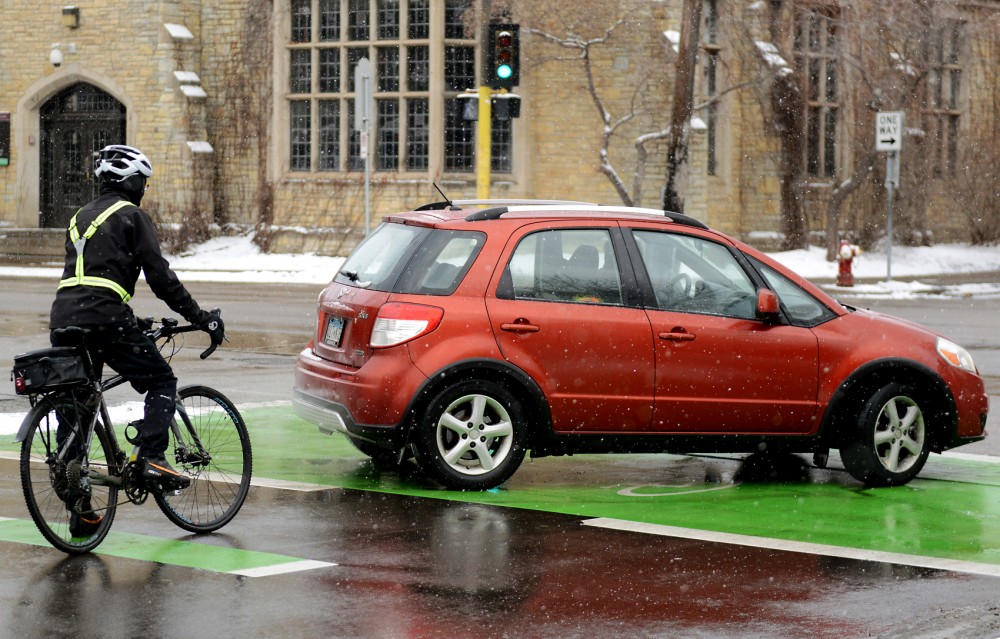Cars will always out speed cyclists, but they could soon zip past at a slower pace if bike advocates have their way.
Proponents for lower speed limits are in preliminary talks with local government officials with hopes of creating a safer city for bikers and pedestrians.
The conversations are focused on logistics, which would include reduced speed limits in areas with high concentrations of foot and bike traffic.
But before speed limits can be lowered, state legislation that would allow communities to choose to lower speed limits needs to be passed, said Nick Mason, deputy director of the Bicycle Alliance of Minnesota.
“It’s a policy conversation. Our city supports [bicyclists] and pedestrians, so we want to be talking about every aspect,” said Ward 1 Councilmember Kevin Reich.
The biggest cost for the city would come from the installation of new signs — something Reich said would not be a significant deterrent because public safety is more important.
In his six years on Minneapolis’ Transportation and Public Works Committee, Reich said he has seen cycling become a more serious form of transportation.
City speeds haven’t yet adapted to that change — and Mason said lower speed limits are necessary for cyclist and pedestrian safety.
“In communities around the state, we are seeing more people bicycling, but one thing that keeps people from riding is the issue of safety,” Mason said. “If we want people to be healthier and have more active lives, we have to reduce injuries and save lives.”
But research shows posting speed limits doesn’t guarantee that drivers will obey them, said Frank Douma, the director of state and public affairs at the University’s Humphrey School of Public Affairs.
“In a perfect world, all those speeds are the same, but residential areas are designed to be safe at a number of speeds, and it would require people to drive at a lower speed than they are comfortable with,” he said. “It’s a noble goal [to lower speed limits], but it just would not work well unless you had strict, unpopular
enforcement.”
The National Highway Traffic Safety Administration reported 41 non-motorist deaths in Minnesota in 2013, and the Centers for Disease Control and Prevention cites young adults ages 15 to 19 to be some of the most vulnerable for cyclist deaths.
Still, Minnesota was chosen as the second most bicycle-friendly state in the U.S. in 2015 by the League of American Bicyclists.
Mason said speed often contributes to these deaths, so lowering the speed limits would be a positive step for communities with high bicycle and pedestrian traffic.
“Eighty-five percent of state streets are local city streets. They are where people live, and those streets are paid for by local property taxes,” he said. “So if people agree this is going to be safer, they should be able to lower the speed limit to make it safer.”








